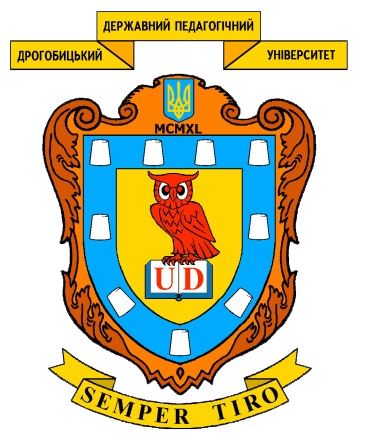HISTORICAL MAPS IN GIS: SCIENTIFIC AND METHODOLOGICAL ASPECT (MOLOCHNA GERMAN SETTLEMENT MAPS AS EXAMPLE)
DOI:
https://doi.org/10.24919/2312-2595.5/47.217779Ключові слова:
Запорізька область; ГІС; Молочанські німецькі поселення; викладання; краєзнавствоАнотація
Анотація. В українських школах дуже мало уваги приділяється методологічним компонентам геоінформатики та методам навчання з використанням історичних карт у ГІС (геоінформаційні системи). Метою дослідження є показати, як ГІС можна використовувати для викладання місцевої історії. Методологія дослідження базується на принципах історизму, системності, науковості та об’єктивності, використанні загальнонаукових та спеціально-історичних методів. Наукова новизна статті полягає у створенні й використанні інформаційних карт у ГІС, які розкривають історію німців та менонітів Запорізької області як основного картографічного матеріалу для навчальних курсів з місцевої історії. Такі карти показують соціо-економічний розвиток різних етнічних груп та конфесій на Півдні України. Зокрема, менонітів та етнічних німців, які зробили величезний внесок у культурний і економічний розвиток регіону та залишили значний шар культурної спадщини. Висновок. Карти, представлені в цій статті, базуються на великій базі даних історичних джерел і вже частково стали основою таких курсів, як «Історія Запорізької області», «Історичне краєзнавство», які викладаються у Мелітопольському державному педагогічному університеті. За допомогою ГІС-карт на перший план виходять різні первинні історичні джерела (статистичні, картографічні та ін.), що дадуть змогу вивчати місцеві територіальні одиниці. Стаття демонструє ГІС-карти 27 німецьких поселень Молочної (Пришибська волость) за певний період часу.
Посилання
Adresnaya kniga zavodov, masterskikh i skladov s/h mashin i orudiy: sostavleno po svedeniyam 1911‒1912 gg. (1909 – nekotorye) [Address book of factories, workshops and warehouses of agricultural machines and implements: Compiled according to information from 1911‒1912]. (1912). Saint Petersburg [in Russian].
Andrievskiy, F.N. (1915). Statisticheskiy spravochnik Tavricheskoy gubernii. Ch. 2, vyp. 3: Melitopolskiy uezd. Spisok naselennykh mest [Statistical reference book of the Tauride province. Pt. 2, iss. 3: Melitopol district. List of settlements]. Simferopol [in Russian].
Boriak, H.V., & Sossa, R.I. (2012). HIS-Atlas Holodomoru v Ukraini 1932–1933 rr. [Geographic Information System (GIS)-based Digital Atlas of the Holodomor in Ukraine 1932‒1933]. Natsionalne kartohrafuvannia: stan, problemy ta perspektyvy rozvytku: zbirnyk materialiv V Vseukrainskoi naukovo-praktychnoi konferentsii «Natsionalni atlasy u formuvanni hlobalnoho informatsiinoho prostoru» (m. Kyiv, 13–14 veresnia 2012 r.) ‒ National mapping: state, problems and prospects of development: collection of materials of the V All-Ukrainian scientific-practical conference "National atlases in the formation of the global information space" (Kyiv, September 13–14, 2012). (Vol. 5, pp. 30–35). Kyiv [in Ukrainian].
Vinokurova, N.F., Badin, M.M., & Badina, O.N. (2014). Izuchenie geograficheskogo kraevedeniya v shkole sredstvami informatsionno-kommunikativnykh tekhnologiy [Geographical study of local history in the school by means of information and communication technologies]. Vesnik Minskogo universiteta ‒ Bulletin of Minsk University, 2. Retrieved from https://cyberleninka.ru/article/n/izuchenie-geograficheskogo-kraevedeniya-v-shkole-sredstvami-informatsionno-kommunikativnyh-tehnologiy [in Russian].
SAZR ‒ Gosudarstvennyy arkhiv Zaporozhskoy oblasti. F. F-250, op. 1, d. 165. Svedeniya o lesokulturnykh rabotakh i lesovodstve na uchastkakh chastnykh zemlevladeltsev. 1895‒10.06.1899 g. [State Archives of Zaporizhzhya Region. F. F-250, vol. 1, № 165. Information about forestry and forestry activities on private landowner plots. 1895‒10.06.1899] [in Russian].
Grishin, E.S. (2017). Tekhnologii i metodika primeneniya prostranstvenno-vremennogo analiza v spetsialno istoricheskikh GIS-proektakh [Technologies and methods of using space-time analysis in specially historical GIS projects]. Istoricheskaya informatika ‒ Historical informatics, 2, 74‒84. doi: 10.7256/2585-7797.2017.2.23295. Retrieved from https://nbpublish.com/library_read_article.php?id=23295 [in Russian].
Dizendorf, V. (Comp.). (2006). Nemtsy Rossii: naselennye punkty i mesta poseleniya: entsiklopedicheskiy slovar [Die Deutschen Russlands: Siedlungen und Siedlungsgebiete: Lexikon]. Moskva. Retrieved from http://kraeved.od.ua/history/deutsche.php [in Russian].
Krylova, A. (2010). Zemski statystychni publikatsii yak dzherelo doslidzhennia zemlevolodinnia etnichnykh ta sotsialnykh hrup Pivnichnoho Pryazovia [The descriptive-statistical publications of Zemstva as a source of ethnic and social population groups landownership in North Priasovie region]. Naukovi pratsi istorychnoho fakultetu Zaporizkoho natsionalnoho universytetu ‒ Scientific works of Historical department of Zaporizhzhia National University, 28, 446‒451. Zaporizhzhia. Retrieved from http://www.istznu.org/page/issues/28/krylova.pdf [in Ukrainian].
Lebedev, P. (1889). Karta Melitopolskogo uezda Tavricheskoy gubernii: po svedenyam 1889 goda [Map of Melitopol uyezd of the Tauride province: according to 1889] [in Russian].
Materialy podvornoy perepisi Melitopolskogo uezda. Vyp. 1: Tablitsy svedeniy o krestyanskom naselenii, skotovodstve, zemlevladenii i zemlepolzovanii [Materials of the court census of Melitopol district. Issue. 1: Tables of information on the peasant population, cattle breeding, land tenure and land use]. (1915). Simferopol [in Russian].
Naselennye mesta Rossiyskoy imperii v 500 i bolee zhiteley s ukazaniem vsego nalichnogo v nikh naseleniya i chisla zhiteley preobladayushchikh veroispovedaniy, po dannym Pervoy vseobshchey perepisi naseleniya 1897 g. [Populated places of the Russian Empire of 500 or more inhabitants, indicating the total population in them and the number of inhabitants of the predominant religions, according to the First General Census of 1897]. (1905). Saint Petersburg [in Russian].
O pozhertvovaniyakh sdelannykh v polzu voysk kolonistami i gosudarstvennymi krestyanami [About donations made in favor of troops by colonists and state peasants]. (1854). Zhurnal Ministerstva gosudarstvennykh imushchestv ‒ Journal of the Ministry of State, 53 (11), 73‒80 [in Russian].
Pinyagin, S.V. (2010). Opyt germanskikh uchenykh po sozdaniyu avtomatizirovannoy sistemy obrabotki dannykh istoricheskikh istochnikov KLEIO [The experience of German scientists in the creation of an automated data processing system for historical sources KLEIO]. Vestnik Chelyabinskogo gosudarstvennogo universiteta. Istoriya ‒ Bulletin of Chelyabinsk State University. History, 15 (196), iss. 40, 168–175 [in Russian].
Prilozhenie ko vsepoddanneyshemu otchetu o sostoyanii Tavricheskoy gubernii za 1889 god [Supplement to the all-subject report on the state of the Taurida province for 1889]. (1890). Simferopol [in Russian].
Rygalova, M.V. (2014). Zarubezhnyy opyt primeneniya GIS v istoricheskikh issledovaniyakh: osnovnye napravleniya [Foreign experience in the use of GIS in historical research: main directions]. Izvestiya Altayskogo gosudarstvennogo universiteta. Istoriya ‒ Bulletin of the Altai State University. History, 4/1, 199‒203. dоi: 10.14258/izvasu(2014) 4.1-33. Retrieved from https://cyberleninka.ru/article/n/zarubezhnyy-opyt-primeneniya-gis-v-istoricheskih-issledovaniyah-osnovnye-napravleniya [in Russian].
Riabko, A.V., & Kukharchuk, R.P. (2014). Informatsiini tekhnolohii v istorii [Information technology in history]. Visnyk Hlukhivskoho natsionalnoho pedahohichnoho universytetu im. Oleksandra Dovzhenka. Seriia: Pedahohichni nauky ‒ Bulletin of the Glukhiv Alexander Dovzhenko National Pedagogical University. Series: Pedagogical sciences, 25, 141‒146 [in Ukrainian].
Topograficheskaya karta Generalnogo shtaba Krasnoy Armii [Topographic map of the General Staff of the Red Army]. (1941). [in Russian].
Tsemenkova, S.I. (2007). Kartografirovanie istoricheskikh dannykh: metodologicheskie problemy ispolzovaniya GIS [Historical data mapping: methodological problems of using GIS]. Dokument. Arkhiv. Istoriia. Sovremennost, 7, 262‒269. Ekaterinburg: Izd-vo Ural. un-ta. Retrieved from http://elar.urfu.ru/handle/10995/20490?locale=en [in Russian].
Altaweel, M. (2016). How GIS is used to understand history. Gis Lounge. Retrieved from https://www.gislounge.com/gis-used-understand-history/.
Brandes, D., & Dönninghaus, V. (Hrsg.). (1999). Bibliographie zur Geschichte und Kultur der Rußlanddeutschen. Bd. 2: Von 1917 bis 1998. München.
Brauckmann, S. (2012). GIS in Primary Schools ‒ Teaching Local History and Cultural Landscape. In T. Jekel, A. Car, J. Strobl, & G. Griesebner (Eds.), GIS_Forum 2012: Geovizualisation, Society and Learning (pp. 309‒317). Berlin: Offenbach.
Diamond, E., & Bodenhamer, D.J. (2001). Race and the Decline of Mainline Protestantism in American Cities: a GIS Analysis of Indianapolis in the 1950s. History and Computing, 13 (1).
Gregory, I.N. (2003). A Place in History. A Guide to Using GIS in Historical Research. Retrieved from http://hds.essex.ac.uk/g2gp/gis/index.asp.
Hammond, T. (2007). Transforming the history curriculum with geospatial tools. Contemporary Issues in Technology and Teacher Education, 14 (3), 266‒287.
Lambrinos, N., & Asiklari, F. (2014). The introduction of GIS and GPS through local history teaching in primary school. European Journal of Geography, 5 (1), 32‒47. Retrieved from https://www.researchgate.net/publication/261622478_The_introduction_of_GIS_and_GPS_through_local_history_teaching_in_primary_school.
Milson, A.J., & Alibrandi, M. (2008). Digital Geography: Geospatial Technologies in the Social Studies Classroom, Information Age. Retrieved from https://www.tandfonline.com/doi/abs/10.1080/00221341.2011.521849.
Richardson, D. (2020). Teaching History with GIS. Retrieved from https://www.esri.com/about/newsroom/arcnews/teaching-history-with-gis/.
##submission.downloads##
Опубліковано
Номер
Розділ
Ліцензія
Авторське право (c) 2020 Проблеми гуманітарних наук: збірник наукових праць ДДПУ імені Івана Франка. Серія Історія

Ця робота ліцензується відповідно до Creative Commons Attribution-NonCommercial-ShareAlike 4.0 International License.








